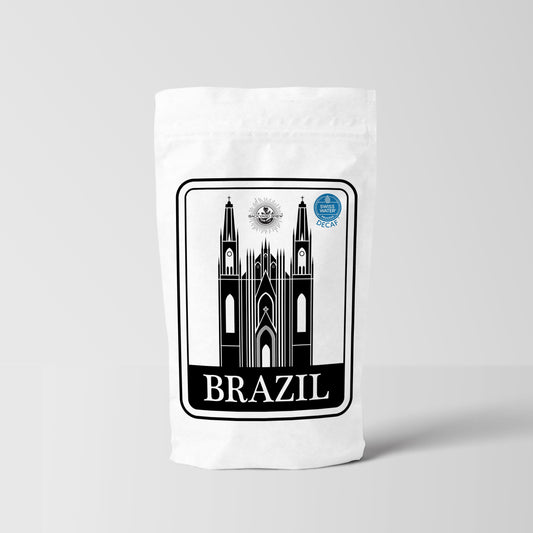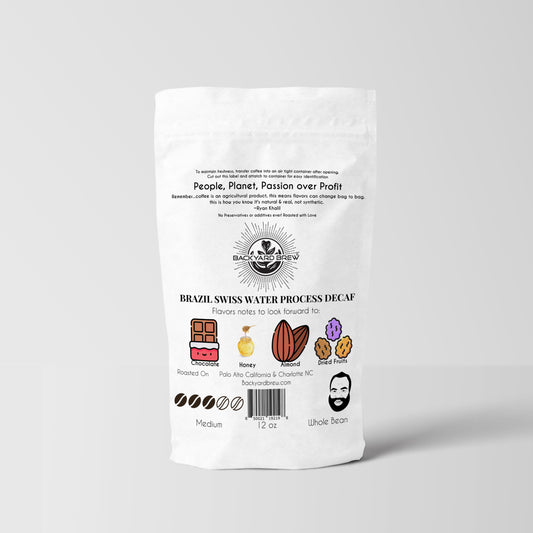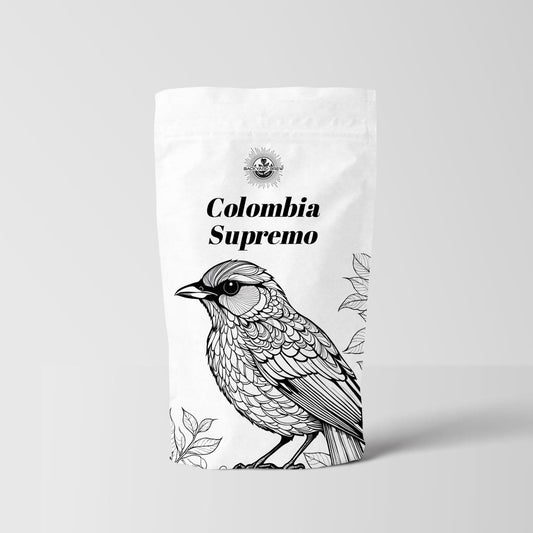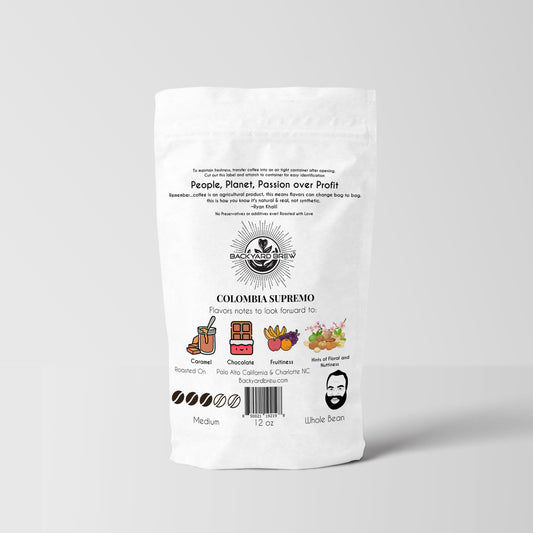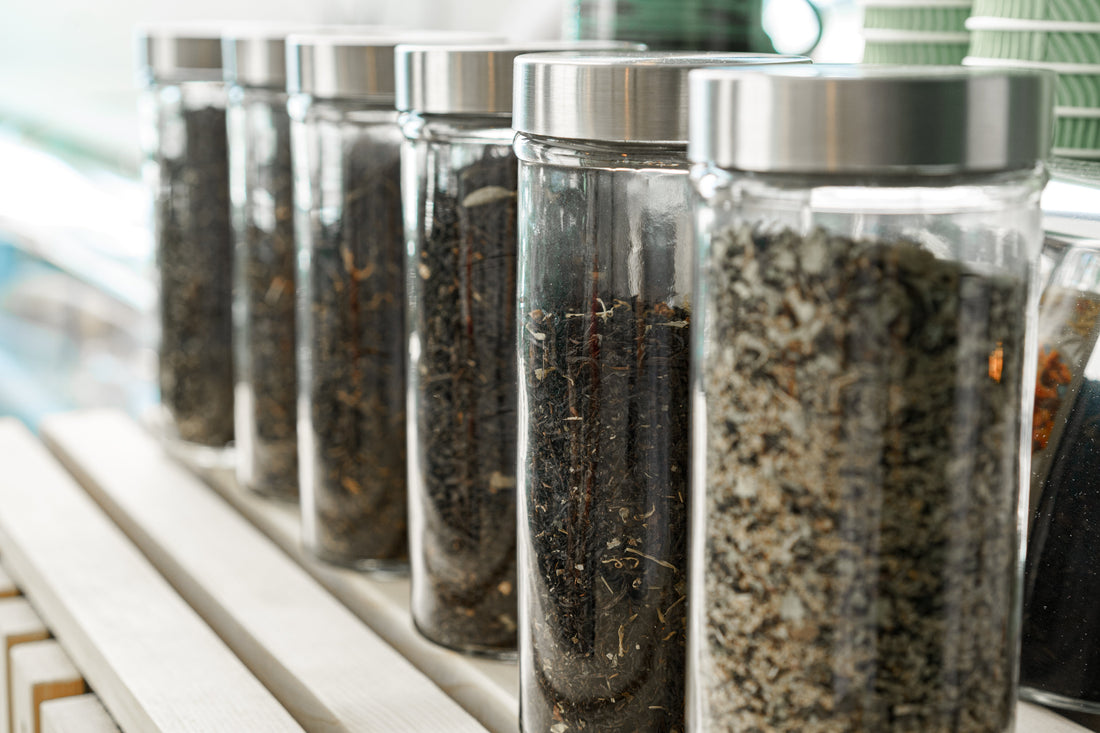Tea Leaf Storage Guide: How to Keep Your Tea Fresh and Flavorful
Related Product
Subscribe
Table of Contents
Have you ever wondered why your favorite tea doesn’t taste the same after a few weeks? Proper storage is key to maintaining the freshness and flavor of tea leaves. In this Blog, we will talk about the best ways to store different types of tea leaves. You’ll learn how to keep your tea tasting great for longer. So, let’s begin…
Understanding the Importance of Tea Leaf Storage
Why is tea leaf storage so important? Tea leaves are delicate. They can easily lose their flavor and aroma if not stored correctly. Factors like light, air, moisture, and temperature can all affect the quality of your tea. By understanding how to store your tea properly, you can enjoy a better cup every time.
The Basics of Tea Leaf Storage
Proper storage is key to keeping your tea fresh and flavorful. First, keep tea leaves in a cool, dark place. The best temperature is between 60°F to 75°F (15°C to 24°C). Avoid areas with temperature changes, as this can cause condensation. Light exposure is also important. Sunlight can break down the tea’s quality. Thus, leading to a loss of flavor. Store your tea in a cupboard or pantry away from direct light. High humidity can cause mold and spoilage. Avoid storing tea in kitchens or bathrooms, where moisture levels can change. Instead, choose a dry, well-ventilated space.
Second, use airtight containers to protect your tea. Choose materials that block light, like opaque glass, ceramic, or metal. Avoid clear glass containers, as they let in light. Make sure the container has a tight lid to keep out air and moisture. This prevents oxidation, which can ruin the tea’s flavor. Pick a container that fits the amount of tea you have. A container that is too large will let in more air, while one that is too small may not hold the tea properly. Finally, label each container with the type of tea and the purchase date. This helps you know what you have and ensures you use your tea while it’s fresh. By following these tips, you can enjoy your favorite teas to the fullest!
Types of Tea Leaves: How Storage Differs
Did you know that different types of tea leaves require different storage methods? Let’s look at some popular types of tea leaves and how to store them properly.
Storing Black Tea
To store Black Tea, use an airtight container to keep it fresh. This prevents air and moisture from entering, which can degrade the tea’s quality. A dark cupboard is ideal for storage, as exposure to light can diminish the flavor over time. If you purchase loose leaf black tea, opt for a tin or a glass jar with a tight seal. These materials help maintain the tea’s rich flavor and aroma. Properly stored, black tea can last for up to two years. Always check for any signs of moisture or unusual odors before brewing. If the tea smells stale or musty, it’s best to discard it.
|
Aspect |
Details |
|---|---|
|
Ideal Container |
Airtight tin or glass jar |
|
Storage Location |
Cool, dark cupboard |
|
Shelf Life |
Up to 2 years |
|
Signs of Spoilage |
Moisture, stale smell, or unusual odor |
|
Brewing Temperature |
200°F (93°C) |
|
Brewing Time |
3-5 minutes |
|
Recommended Amount |
1 teaspoon per cup |
Storing White Tea
White Tea is more delicate than black tea and requires special care. It has a subtle flavor that can fade quickly if not stored properly. Store white tea in a cool, dark place, similar to black tea. However, it’s best to consume it within six months to a year for the best taste. Use a breathable container, such as a paper bag or a cloth pouch, to allow some air circulation while protecting the tea from light and moisture. This helps preserve its delicate flavors. Always check the tea for freshness before brewing. If the leaves appear brittle or lack aroma, it may be time to replace them.
|
Aspect |
Details |
|---|---|
|
Ideal Container |
Breathable paper bag or cloth pouch |
|
Storage Location |
Cool, dark place |
|
Shelf Life |
6 months to 1 year |
|
Signs of Spoilage |
Brittle leaves, lack of aroma |
|
Brewing Temperature |
160°F to 185°F (70°C to 85°C) |
|
Brewing Time |
4-5 minutes |
|
Recommended Amount |
1 teaspoon per cup |
Storing Herbal Tea
Herbal Tea can vary widely in ingredients, which affects how it should be stored. Most herbal teas should be kept in airtight containers to prevent air and moisture from degrading their quality. Store them away from heat sources and direct sunlight to maintain their vibrant flavors. Since herbal teas often contain dried fruits, flowers, and herbs, they can lose their taste quickly if not stored correctly. Aim to use them within a year for the best flavor. Always check for any signs of spoilage, such as mold or an off smell, before brewing. If the tea smells stale or has changed color, it’s best to discard it.
|
Aspect |
Details |
|---|---|
|
Ideal Container |
Airtight container |
|
Storage Location |
Cool, dark place |
|
Shelf Life |
Up to 1 year |
|
Signs of Spoilage |
Mold, off smell, or color change |
|
Brewing Temperature |
200°F (93°C) |
|
Brewing Time |
5-7 minutes |
|
Recommended Amount |
1 teaspoon per cup |
Storing Oolong Tea
Oolong Tea falls between black and green tea in terms of oxidation and flavor profile. It can be stored similarly to black tea. Use an airtight container to keep it fresh and store it in a cool, dark place to protect it from light and moisture. Oolong tea can last for up to two years if stored properly. The flavor can change over time, so it’s important to check the tea for freshness before brewing. If the leaves appear dull or lack aroma, it may indicate that the tea has lost its quality. Proper storage will help you enjoy the unique flavors of oolong tea for longer.
|
Aspect |
Details |
|---|---|
|
Ideal Container |
Airtight container |
|
Storage Location |
Cool, dark place |
|
Shelf Life |
Up to 2 years |
|
Signs of Spoilage |
Dull leaves, lack of aroma |
|
Brewing Temperature |
190°F to 200°F (88°C to 93°C) |
|
Brewing Time |
3-5 minutes |
|
Recommended Amount |
1 teaspoon per cup |
Storing Pu erh Tea
Pu erh Tea is unique because it can age like fine wine, developing richer flavors over time. It’s best to store it in a breathable container, such as a clay pot or a paper bag. This allows the tea to develop its flavor while preventing moisture buildup. Keep it in a cool, dark place to protect it from light and heat. Avoid strong odors, as pu erh can absorb them easily, which may alter its taste. Proper storage will enhance its unique characteristics as it ages. Always check for freshness before brewing. If the tea smells off or has an unusual texture, it’s best to discard it.
|
Aspect |
Details |
|---|---|
|
Ideal Container |
Breathable clay pot or paper bag |
|
Storage Location |
Cool, dark place |
|
Shelf Life |
Indefinite (improves with age) |
|
Signs of Spoilage |
Off smell, unusual texture |
|
Brewing Temperature |
200°F (93°C) |
|
Brewing Time |
3-5 minutes |
|
Recommended Amount |
1 teaspoon per cup |
Tea Storage Practices and Their Ethical Implications
Understanding how ethical sourcing, organic farming, and Fair Trade practices impact tea storage is essential for tea lovers. These factors not only influence the quality of tea but also its longevity when stored.
-
Impact of Ethical Sourcing
Ethical sourcing plays a significant role in the quality of tea. When tea is sourced ethically, it often comes from farms that prioritize quality over quantity. This means that the tea leaves are harvested at the right time and handled with care. As a result, ethically sourced tea retains its flavor and aroma longer. High-quality tea can last longer in storage. For example, black tea can remain fresh for up to two years when stored properly. In contrast, lower-quality teas may spoil more quickly, even in ideal conditions.
-
Organic Tea Storage
Organic tea is grown without synthetic pesticides and fertilizers. This leads to healthier tea leaves. When stored correctly, organic teas can have a longer shelf life compared to conventional teas. Organic teas should be kept in cool, dark places. Exposure to light and heat can degrade their quality. For instance, white tea, which is delicate, should be consumed within six months to a year for the best taste. Proper storage helps maintain its subtle flavors.
-
Fair Trade Practices
Fair Trade certification ensures that farmers receive fair wages and work in safe conditions. This commitment to quality often results in better tea. Fair Trade teas are typically produced with care, leading to higher quality. This quality translates into better storage outcomes. For example, Fair Trade black tea can last longer and maintain its flavor when stored in airtight containers.
-
Environmental Impact
Sustainable storage practices are crucial for reducing waste. Many ethical brands use eco-friendly packaging. This not only protects the tea but also benefits the environment. By choosing brands that prioritize sustainable practices, consumers can help reduce packaging waste. This is important in a world where plastic pollution is a growing concern.
-
Consumer Awareness
Choosing ethically sourced tea encourages better storage practices among consumers. When consumers are informed about the benefits of ethical sourcing, they are more likely to store their tea properly. Teas from ethical sources often have longer shelf lives. For example, properly stored oolong tea can last up to two years. Consumers should pay attention to storage instructions provided by brands.
-
Labeling and Transparency
Ethical brands often provide clear labeling and storage instructions. This transparency helps consumers maintain the quality of their tea. Labels may include information on ideal storage conditions, such as temperature and humidity levels. This guidance is essential for preserving the tea’s flavor and aroma.
-
Community Support
Supporting ethical brands promotes better farming practices. This, in turn, leads to improved tea quality and storage. By choosing Fair Trade and organic teas, consumers contribute to the well-being of farming communities. This support helps ensure that farmers can continue to produce high-quality tea.
|
Storage Aspect |
Details |
|
Impact of Ethical Sourcing |
Tea sourced ethically often has better quality, which can enhance storage longevity. |
|
Quality Retention |
High-quality tea retains flavor and aroma longer, making proper storage more effective. |
|
Organic Tea Storage |
Organic teas, free from synthetic chemicals, may have a longer shelf life when stored properly. |
|
Storage Conditions |
Organic teas should be stored in cool, dark places to maintain their natural qualities. |
|
Fair Trade Practices |
Fair Trade teas often come from farms that prioritize quality, leading to better storage outcomes. |
|
Environmental Impact |
Sustainable storage practices reduce waste and promote eco-friendly packaging. |
|
Consumer Awareness |
Choosing ethically sourced tea encourages better storage practices among consumers. |
|
Shelf Life Considerations |
Teas from ethical sources may have longer shelf lives due to better handling and storage methods. |
|
Labeling and Transparency |
Ethical brands often provide clear storage instructions, helping consumers maintain quality. |
Common Mistakes to Avoid while storing tea leaves
Storing tea properly is essential for maintaining its freshness and flavor. However, many people make common mistakes that can compromise the quality of their tea. Here are some pitfalls to avoid to ensure your tea stays fresh.
-
Avoiding Light Exposure
Keeping tea away from light is crucial. Light can degrade the quality of tea leaves over time. Ultraviolet rays can break down the delicate compounds in tea, leading to a loss of flavor and aroma. Always store your tea in opaque containers. These containers block light and protect the tea from exposure. Dark glass, ceramic, or metal tins are excellent choices.
Tea storage tip #1
Choose a dark cupboard or pantry for storage. Avoid placing tea near windows or under bright kitchen lights. This simple step can significantly extend the shelf life of your tea.
-
Keeping Tea Away from Strong Odors
Strong odors can negatively affect the taste of tea. Tea leaves are porous and can easily absorb smells from their surroundings. This can lead to a muddled flavor profile. Avoid storing tea near spices, coffee, or other strong-smelling items.
Tea storage tip #2
Designate a specific area for tea storage that is free from strong odors. Use airtight containers to further protect the tea from absorbing unwanted scents. This will help maintain the pure flavor of your tea.
-
Not Checking for Moisture
Moisture is a significant concern for tea storage. Excess moisture can lead to mold growth and spoilage. Always ensure your containers are airtight to keep moisture out. If you live in a humid area, consider using silica gel packets in your tea storage. These packets absorb excess moisture and help keep the environment dry.
Tea storage tip #3
Periodically check your tea for any signs of moisture or mold. If you notice any dampness or unusual smells, it’s best to discard the tea. Proper monitoring can prevent spoilage and ensure you enjoy fresh tea.
-
Ignoring Temperature Fluctuations
Temperature fluctuations can also affect tea quality. Storing tea in areas with extreme temperature changes can lead to condensation inside the container. This can create a damp environment that promotes mold growth.
Tea storage tip #4
Store tea in a cool, stable environment. Avoid placing it near heat sources like stoves, ovens, or radiators. A consistent temperature helps maintain the tea’s flavor and aroma.
-
Using Improper Containers
Not all containers are suitable for tea storage. Using clear glass jars or containers that are not airtight can expose tea to light and air. This can lead to oxidation and loss of flavor.
Tea storage tip #5
Invest in high-quality, airtight containers designed for tea storage. Look for options that are opaque and made from materials that do not impart any flavors. This will help preserve the integrity of your tea.
|
Mistake |
Description |
Tip |
|
Avoiding Light Exposure |
Light degrades tea quality and flavor. |
Use opaque containers like dark glass or metal tins. |
|
Keeping Tea Away from Strong Odors |
Tea absorbs strong smells, affecting taste. |
Store tea away from spices and strong-smelling items in airtight containers. |
|
Not Checking for Moisture |
Moisture can cause mold and spoilage. |
Ensure containers are airtight and check for dampness regularly. |
|
Ignoring Temperature Fluctuations |
Temperature changes can create condensation and dampness. |
Store tea in a cool, stable environment away from heat sources. |
|
Using Improper Containers |
Clear or non-airtight containers expose tea to light and air. |
Use high-quality, airtight, and opaque containers. |
10 Benefits of Proper Tea Storage
Proper tea storage is essential for maintaining the quality and flavor of your tea. Here are ten key benefits of storing tea correctly.
1. Preserves Flavor and Aroma
Proper storage helps retain the natural flavors and aromas of tea leaves. When tea is stored in airtight containers, it prevents exposure to air and moisture. This keeps the essential oils intact, ensuring that each cup of tea is as flavorful as possible. Fresh tea offers a rich and satisfying experience.
2. Extends Shelf Life
Storing tea correctly can significantly extend its shelf life. Different types of tea have varying shelf lives, but proper storage can help maximize this duration. For example, black tea can last up to two years when stored properly. In contrast, improperly stored tea may spoil within months.
3. Prevents Spoilage
Moisture is a major enemy of tea. It can lead to mold growth and spoilage. By using airtight containers and keeping tea in a cool, dry place, you can prevent moisture from affecting your tea. This ensures that your tea remains safe to drink and free from harmful contaminants.
4. Maintains Quality
Quality is crucial for a great tea experience. Proper storage helps maintain the quality of tea leaves. When tea is kept away from light, heat, and strong odors, it retains its original characteristics. This means you can enjoy the unique flavors and aromas that each type of tea offers.
5. Enhances Health Benefits
Many teas have health benefits, such as antioxidants and other beneficial compounds. Proper storage helps preserve these compounds. When tea is stored correctly, it maintains its nutritional value. This means you can enjoy the health benefits of tea with every cup.
6. Reduces Waste
Improperly stored tea can lead to waste. When tea goes stale or spoils, it must be discarded. By storing tea properly, you can reduce waste and make the most of your tea purchases. This is not only economical but also environmentally friendly.
7. Provides a Better Brewing Experience
Fresh tea leads to a better brewing experience. When tea is stored correctly, it brews more effectively. The flavors and aromas are more pronounced, resulting in a more enjoyable cup. Proper storage ensures that you get the best out of your tea leaves every time you brew.
8. Supports Sustainable Practices
Proper tea storage can contribute to sustainable practices. By reducing waste and ensuring that tea lasts longer, you help minimize the environmental impact of tea production and consumption. This aligns with eco-friendly values and supports sustainable agriculture.
9. Encourages Mindful Consumption
When you store tea properly, you become more mindful of your consumption habits. You are likely to pay attention to the types of tea you have and how long they last. This awareness can lead to more intentional choices about what to brew and when to enjoy it.
10. Enhances the Overall Tea Experience
Proper storage enhances the overall tea experience. When tea is fresh and flavorful, it elevates the enjoyment of each cup. Whether you are sharing tea with friends or enjoying a quiet moment alone, fresh tea makes the experience more special.
Traditional practices for safe tea storage
Traditional practices for tea storage have been passed down through generations. These methods focus on preserving the quality and flavor of tea while ensuring safety. Here are some key traditional practices for safe tea storage.
1. Use of Clay Pots
In many cultures, clay pots are a popular choice for storing tea. Clay is a breathable material that allows for air circulation while protecting tea from light. This helps maintain the tea's flavor and aroma. Clay pots also absorb excess moisture, creating a stable environment for tea storage.
2. Bamboo Containers
Bamboo has been used for centuries to store tea. Bamboo containers are lightweight and naturally breathable. They help regulate humidity levels, preventing moisture buildup. Additionally, bamboo is eco-friendly and adds a unique aesthetic to tea storage.
3. Linen or Cotton Bags
In some traditions, tea is stored in linen or cotton bags. These breathable fabrics allow air circulation while protecting tea from light and moisture. Linen and cotton are also natural materials that do not impart any flavors to the tea. This method is especially popular for loose leaf teas.
4. Dark, Cool Storage Areas
Traditional practices emphasize the importance of storing tea in dark, cool places. Many cultures recommend keeping tea in a pantry or cupboard away from direct sunlight and heat sources. This helps prevent degradation of the tea's quality and preserves its flavor over time.
5. Avoiding Strong Odors
Traditional tea storage practices also highlight the need to keep tea away from strong odors. Tea leaves can absorb smells from their surroundings, which can alter the flavor. Storing tea in a separate area, away from spices and other strong-smelling items, is a common practice.
6. Seasonal Storage Adjustments
In some cultures, tea storage practices vary with the seasons. For example, during humid months, tea may be stored in drier environments to prevent moisture buildup. In colder months, tea may be kept in warmer areas to avoid condensation. Adjusting storage methods based on seasonal changes helps maintain tea quality.
7. Regular Checks and Maintenance
Traditional practices often include regular checks on stored tea. This involves inspecting tea for signs of moisture, mold, or spoilage. By monitoring the condition of the tea, you can ensure it remains fresh and safe to consume. This practice also encourages mindful consumption.
8. Use of Natural Preservatives
In some cultures, natural preservatives are used to enhance tea storage. For example, dried herbs or citrus peels may be added to tea storage containers to help absorb moisture and odors. These natural additives can also impart subtle flavors to the tea.
9. Avoiding Plastic Containers
Traditional practices often advise against using plastic containers for tea storage. Plastic can retain odors and may leach chemicals into the tea. Instead, natural materials like glass, metal, or ceramic are preferred for their inert properties and ability to protect tea quality.
10. Respecting Cultural Heritage
Finally, traditional tea storage practices are often tied to cultural heritage. Many cultures have unique methods and rituals associated with tea storage. Respecting these practices not only preserves the quality of the tea but also honors the traditions and history behind it.
Modern Practices for Safe Tea Storage
Modern practices for safe tea storage focus on maintaining freshness and flavor through effective techniques. These methods are designed to protect tea from environmental factors that can compromise its quality. Here are key modern practices for safe tea storage.
1. Airtight Containers
Using airtight containers is essential for preserving tea quality. Glass, ceramic, or metal containers that seal tightly prevent exposure to air, which can lead to oxidation and staleness. Additionally, opaque containers block light, further protecting the tea from degradation. This combination helps maintain the tea's flavor and aroma for a longer period.
2. Ideal Storage Conditions
Storing tea in a cool environment is crucial. The ideal temperature for tea storage is between 19 to 20 degrees Celsius. Keeping tea away from humidity is equally important, as excess moisture can lead to mold growth and spoilage. A dark cupboard or pantry is often the best choice for storing tea.
3. Separation of Flavors
To maintain the integrity of each tea type, it is important to store them separately. Different teas have unique flavor profiles, and strong-scented teas can easily contaminate the delicate flavors of others. By keeping them in distinct containers, you ensure that each tea retains its original taste.
4. Regular Monitoring
Regularly checking stored tea is a good practice. Inspecting for signs of moisture, mold, or spoilage helps ensure that the tea remains fresh and safe to consume. This proactive approach allows you to address any issues before they affect the quality of your tea.
5. Quality Packaging
Investing in good packaging is essential for long-term tea storage. If the original packaging is inadequate, consider transferring tea to high-quality, resealable bags or containers designed for preserving freshness. This helps protect the tea from air and moisture.
6. Short-Term vs. Long-Term Storage
Buying fresh tea in smaller quantities is a smart strategy. This ensures that you consume the tea at its peak freshness. Avoid holding onto tea for extended periods unless it is specifically designed for aging, such as certain pu erh teas.
7. Use of Desiccants
In humid climates, using food-safe desiccant packets can be beneficial. These packets absorb excess moisture and help maintain a dry environment within the tea container. This practice is especially useful for preventing mold and spoilage.
8. Avoid Refrigeration
Generally, it is best to avoid refrigerating tea. The humidity in refrigerators can negatively affect tea quality. If refrigeration is necessary, ensure that the tea is stored in an airtight, moisture-proof container to minimize risks.
9. Labeling and Dating
Labeling containers with the type of tea and the date of purchase is a practical organizational tip. This helps you track freshness and prioritize consumption, ensuring that you enjoy your tea at its best.
10. Respecting Shelf Life
Understanding the shelf life of different types of tea is crucial for proper storage. For example, white and green teas are best consumed within 6 to 12 months, while oolong and black teas can last up to 2 years if stored properly. Being aware of these timelines helps you make informed decisions about your tea.
|
Storage Aspect |
Modern Practices |
Traditional Practices |
|
Containers |
Airtight, opaque containers (glass, metal, ceramic) to prevent air and light exposure. |
Clay pots, bamboo containers, or linen bags that allow some breathability. |
|
Storage Conditions |
Cool, dark environments with controlled temperature (19-20°C) and low humidity. |
Dark, cool storage areas, often without specific temperature control. |
|
Separation of Flavors |
Strong emphasis on keeping different tea types stored separately to avoid contamination. |
Generally, teas are stored together, but care is taken to avoid strong odors. |
|
Monitoring |
Regular checks for moisture, spoilage, and freshness are encouraged. |
Periodic inspections for signs of spoilage, often based on experience. |
|
Packaging |
High-quality, resealable bags or containers for long-term storage. |
Natural materials like cloth or bamboo, often reused for storage. |
|
Quantity Management |
Buying in smaller quantities to ensure freshness and reduce waste. |
Often larger quantities are stored, with less emphasis on immediate consumption. |
|
Moisture Control |
Use of desiccants in humid climates to absorb excess moisture. |
Natural methods, such as using clay pots that absorb moisture. |
|
Refrigeration |
Generally avoided due to humidity risks; if necessary, use airtight containers. |
Refrigeration is rarely practiced; tea is kept at room temperature. |
|
Labeling |
Containers are labeled with tea type and purchase date for tracking freshness. |
Less emphasis on labeling; often relies on memory or experience. |
|
Shelf Life Awareness |
Clear understanding of shelf life for different tea types; encourages timely consumption. |
Knowledge of shelf life based on tradition, but less formalized. |
Conclusion
Now that you know all about tea storage, you can take the necessary steps to preserve your tea's freshness and expand its shelf life. By implementing both modern and traditional practices, you can ensure that your tea remains flavorful and aromatic for longer. Remember to store your tea in airtight containers, keep it away from light and moisture, and regularly check for freshness.
If you're looking for the best quality tea to enjoy, look no further than Backyard Brew. We offer a wide selection of premium teas that you will love. Our commitment to quality ensures that you receive only the finest tea, perfectly suited for your storage practices. Choose Backyard Brew for your tea needs and experience the difference in every cup!

